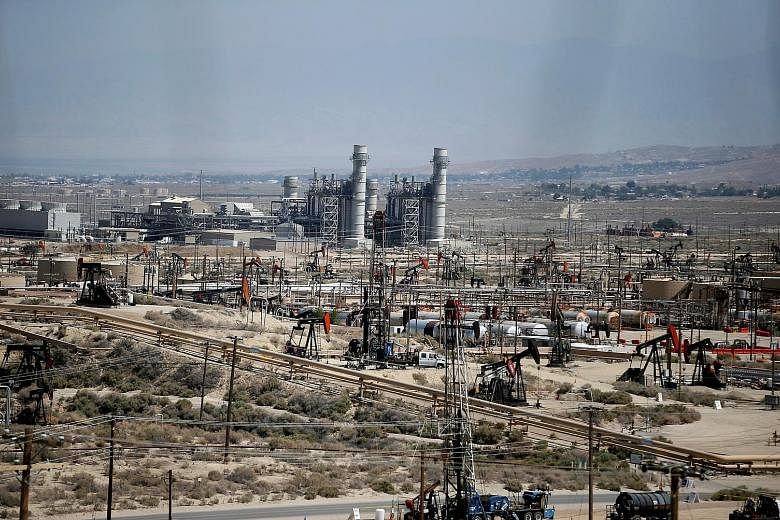Global demand for oil could outstrip supplies over the next few months if the Opec nations stick to their agreed output cuts, said a top energy executive yesterday.
Mr Keisuke Sadamori said at the launch of Singapore International Energy Week: "So far, with the solid demand growth and some control in supply... the oil market as a whole has seen a stock drop."
Crude inventories of the Organisation for Economic Cooperation and Development countries had fallen below three billion barrels as at last Dec 31, the first time since December 2015, although they have since risen.
He said that while output cuts by the Organisation of Petroleum Exporting Countries (Opec) and non- Opec countries are in the early stages, "we can say that it looks like they have had a good start".
"If that continues, we will see the stock start to drop in the first half of this year," he added.
But Mr Sadamori, who is director of energy markets and security at the Paris-based global energy watchdog International Energy Agency (IEA), said this will also depend on other factors, in particular investment and production in the United States, and how global demand fares.
Benchmark Brent - at about US$51 per barrel yesterday - has been under pressure amid a resurgence in US shale oil production.
Mr Sadamori said the oil surplus stands at around 300 million barrels.
So for the gap to disappear, at least one million barrels must be reduced every day for about a year - either from lower production or higher demand.
Mr Sadamori, who presented the IEA's latest five-year oil market report, said the market is expected to see only a "modest recovery" this year, given the unprecedented cutbacks in upstream capital spending over the past two years.
These investments fell 25 per cent in 2015 and a further 26 per cent in 2016 to US$433 billion (S$604 billion), although they look on track to post gains in the range of 3 to 7 per cent this year, he noted.
He warned that unless new and significant projects are sanctioned quickly, growth could well stall by 2020 - while demand is expected to increase by 7.3 million barrels a day by 2022.
This could spell greater volatility and concern over the security of supply and, in turn, lead to a "sharp increase" in oil prices, he added.
"Now we're seeing some uptick in upstream activity, especially in North America. But... if you look at the major international oil companies, it's still a very cautious attitude in terms of increasing spending for the upstream projects... So there is a certain level of uncertainty in terms of the outlook for investments."
He added: "We do not have many projects waiting to come online in 2020. Even though demand then will grow more than seven million barrels a day, supply will only be around 5.6 million barrels a day.
"If this leads to a very tight market in 2020, there may be a spike in oil prices."


